Top 5 Best Travel Banjos
There’s a certain romance to strapping a banjo on your back and hopping on the next train headed out west. Of course, for most of us, the reality of travel is more like stuffing your banjo into the overhead compartment of a plane headed to Atlanta. Wherever you’re going, though, and however you get there, one thing is clear: a banjo makes a perfect travel companion.
There are a bunch of great options for travel banjos out there. Whether you want something compact, sturdy, or easily playable (or all three), here’s our guide to finding the best travel banjo for you!
Types of Travel Banjo
There are three main type of travel banjo, which all have pros and cons. Ultimately, your needs will determine which is best for you. If you’re just looking for something portable to practice on, a mini travel banjo may fit the bill. If you’re going to end up playing in a jams or at gigs, however, a cheap full-size banjo may be the best way to go.
Mini Travel Banjos
These have a very short scale, and are usually designed to be tuned cGCEG, a 4th up from normal banjo tuning. This means that you’ll have to transpose everything you play. If you play a G chord, it’ll come out as C, if you play a C, it’ll come out as F, etc.
They also have a markedly different sound than a normal banjo, thanks to their small size. Mini travel banjos are usually quieter, and a little tinny-sounding, in part because of the high tuning.
Ultimately, this makes mini banjos less useful for playing in groups. However, the shorter scale makes them extremely portable. If you need a banjo that will fit in a carry-on bag, or just want something to play around with by yourself, a mini travel banjo like the Gold Tone Plucky or Dean Backwoods Mini might be the best for you.
A-Scale Travel Banjos
These banjos are just a bit smaller than the usual banjo. They’re usually built to be tuned aEAC#E, one full step up from standard banjo tuning. Again, this means that you will have to transpose whenever you’re playing one with other people. However, you can also just put heavier strings on and tune it in standard tuning.
A-scale travel banjos are an intermediate step between mini and normal banjo sizes. If you’re looking for something just a bit more portable than your current banjo, they can be a great fit. Their smaller size means they’re lighter, but they still have much the same tone and volume as a regular banjo. Still, the small size savings you get may not be worth it if you have to buy specialty strings to keep your travel banjo in standard gDGBD tuning.
Cheap, Lightweight Normal Banjos
A third option is simply to buy another banjo, preferably one that is easy to carry and you’re not afraid of knocking around. An open-back banjo is usually better for this, since a resonator adds a lot of weight. The Gold Tone AC-1 and Rogue starter banjo are great examples of this. Inexpensive yet sturdily built, they can be great travel companions.
Since we’re talking about a normal-scale banjo, you won’t find it any easier to fit this on a plane or in your trunk. Even a lightweight open-back banjo can be somewhat bulky. However, you’ll have a full-size banjo that sounds and feels exactly like a banjo should. If you’re planning on playing in a group or just don’t want to transpose constantly, this is the best option for you.
Gold Tone AC-1
Summary: A full-sized banjo that won’t break the scales or the bank
Best for: Anyone who just needs a lighter banjo to travel with
One of the best features of the AC-1 when it comes to travel is its weight. At less than 4 pounds, it’s incredibly light for a full-sized banjo. That’s thanks to the acoustic composite material that Gold Tone uses to make it. Rather than the usually wooden neck and rim, the AC-1 has a molded composite body that will withstand the elements better than its wooden counterparts.

Gold Tone actually makes a travel banjo in its AC series, the AC-Traveler. It’s an A-scale banjo, meaning it’s about 3 inches shorter than the AC-1. I personally don’t find that 3 inches to be hugely important, and prefer the scale of a normal-length banjo. If those 3 inches are important, though, the AC-Traveler has all the features of the AC-1 in an even smaller package.
The AC-1 is very comfortable to play, and very well set up. Intonation and action are great out of the box, and the tuners work well even after time on the road. Since it’s a full-sized banjo, you won’t notice a difference in scale length from your usual banjo, which is a big advantage over smaller banjos. The normal size also helps give it a full, loud tone.
Overall, the AC-1 is the best choice for someone who just wants a regular banjo that they can knock around. In fact, it’s also one of our top picks for affordable banjos, not just for travel. It’s certainly not compact, and wouldn’t be a great fit for a backpacking trip. But its light weight and playability make it a great travel companion for those who don’t need the absolute smallest banjo they can get.
Pros
- Full size helps playability and tone
- Very lightweight for a full-size banjo
- Very durable composite body and neck
Cons
- Not very compact
Deering Goodtime Parlor Banjo
Summary: A smaller but still full-bodied banjo
Best for: Someone who doesn’t want to sacrifice sound when they travel
Taking a page from the parlor guitar, Deering uses the term “parlor” to mean a smaller version of a banjo. Their Goodtime parlor banjo is 4 inches shorter than a standard banjo, with 19 frets instead of 22. Not only does this make it more portable, it’s a great size for kids or anyone with small hands. In fact, it’s often sold to music schools for younger students to use.
Like all of Deering’s Goodtime banjos, the parlor banjo is made in the USA. It is fairly light, weighing in at about 4.5 pounds. Don’t let that fool you, though. It is quite solidly built out of hard maple, and will withstand the rigors of the road. One slight concern is that there’s no truss rod to reinforce the neck, although there is a similar “coordinator rod” useful for making adjustments. I wouldn’t expect to have any issues with the neck on this banjo, but a truss rod is usually preferable.

One great thing about the parlor banjo is that, unlike other small banjos, it has a full-sized, 11″ head. This means that you get a loud, full sound out of it, despite the smaller scale length. You’ll definitely be heard in a jam or group setting. The plunky tone is especially good for clawhammer, although it has a nice punch useful for bluegrass. Despite the shorter scale, it still feels very comfortable to play, and the set-up out of the box is very good.
As with any short-scale banjo, you’ll need to put heavier-than-normal strings on the Goodtime parlor banjo in order to keep it in standard G tuning. It also sounds quite nice in A tuning (aEAC#E) using standard banjo strings.
Gold Tone Plucky Travel Banjo
Summary: A sturdy mini banjo that still sounds great
Best for: Anyone looking for a lightweight banjo without a lightweight tone
Plucky is a cute name for a tiny banjo. Gold Tone created this mini travel banjo with portability in mind, and it’s incredibly compact. But don’t let cute looks fool you into thinking this is a toy! The Plucky gets the same care in assembly and set up as Gold Tone’s other banjos, making it the best-sounding mini travel banjo out there.
Like other mini banjos, the Gold Tone Plucky is designed for “C tuning,” cGCEG. This is a 4th up from standard banjo tuning, or like you’ve got a capo on the 5th fret. It’s bright and jangly, with a lot of punch but not a ton of sustain. It gets a little shrill at the top of the range, but that’s to be expected when you get up that high. Because it has a smaller body than a normal banjo, it’s a little quieter. The higher tone helps it project more, though, so being heard shouldn’t be an issue.

As a mini banjo, the Plucky’s fretboard can feel a little crowded. This is especially true up the neck, as the frets get very close together. However, Gold Tone has done a lot to keep this very playable, and even those with big hands and fingers won’t find it too hard to fit them. If you’ve ever picked up a concert-sized ukulele, the Plucky will feel very familiar.
The Plucky is built very solidly, and can take a beating while on the road. Even so, it’s quite light, and very portable. At around 2 pounds, this is just about as light a banjo as you can get, making it a good hiking companion. It’s also short enough to just about fit in a carry-on bag.
Pros
- Compact and lightweight
- Very sturdily built
Cons
- Gets shrill at its highest notes
Dean Backwoods Mini Travel Banjo
Summary: A banjo with a Goldilocks size and great playability
Best for: Someone who wants a compact banjo that can still take standard tuning
The Dean Backwoods Mini can perhaps best be described as a big mini banjo. Yes, I know that sound weird. But with a scale length of 20″, it’s not quite a “short scale” banjo like the 24″ Goodtime parlor. It’s also not as small as the ~16″ Gold Tone Plucky. This makes it a bit of a Goldilocks instrument for those who want to go small without sacrificing too much space on the fretboard.
The scale length on the Dean Backwoods Mini is at the edge of viability for standard banjo tuning (gDGBD). It’s certainly possible, and can sound OK, but it’s better suited to a higher tuning. If you do want to use standard tuning, you won’t be able to use regular banjo strings. Instead, use a tool like the D’Addario String Tension Pro to figure out how heavy you’ll have to go.
The Dean Backwoods Mini is a very compact banjo at just over 30 inches long. It’s not quite short enough to fit in a standard carry-on bag, but it will still easily fit in an overhead compartment or even possibly under your airplane seat. It is, however, somewhat heavy for its small size, and weighs about as much at the Gold Tone AC-1 at 4 pounds. As the name suggests, it’s still not a bad choice to take on a hiking trip, but it won’t quite be light as a feather.
Pros
- Shortest scale length that still allows for standard tuning
- Fretboard still very comfortably spaced
Cons
- Not as compact as the Plucky
- Needs heavy strings for standard tuning
Rogue Starter/Travel Banjo
Summary: A bare-bones banjo with everything you need and nothing you don’t
Best for: Someone who just wants a cheap knockaround travel banjo
Like the Gold Tone AC-1, the Rogue “travel banjo” is simply an inexpensive full-sized banjo. Rogue has made its name in making very cheap instruments that still play and sound good, and their travel banjo is no different. It’s a bare-bones banjo that may sound and feel a little clunky, but holds up well. And the price just can’t be beat.
The Rogue travel banjo is not as light as the Gold Tone AC-1. Still, it’s not particularly heavy for a banjo, especially since it does not have a metal tone ring or a resonator. It has a hollow, plunkier sound that suits old-time clawhammer playing better than it does bluegrass. The neck is a little chunky but still pretty comfortable, and the Rogue starter/travel banjo is easy to play. After all, it’s built with a beginner in mind!
One thing to note is that it does not come very well set up out of the box. You’ll need to set the bridge properly when you first tune it up, or else you’ll suffer from bad intonation. Luckily, this is pretty easy to do. Simply measure from the nut to the 12th fret. Then, measure that same distance from the 12th fret onto the head. That’s where your bridge goes! This is a good skill to know anyway, since banjo bridges can get easily get knocked out of place during travel.
Pros
- Great value
Cons
- Needs a set-up out of the box
- Tone not as well suited for bluegrass
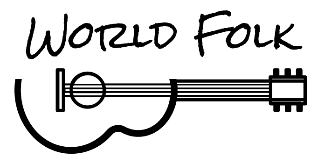

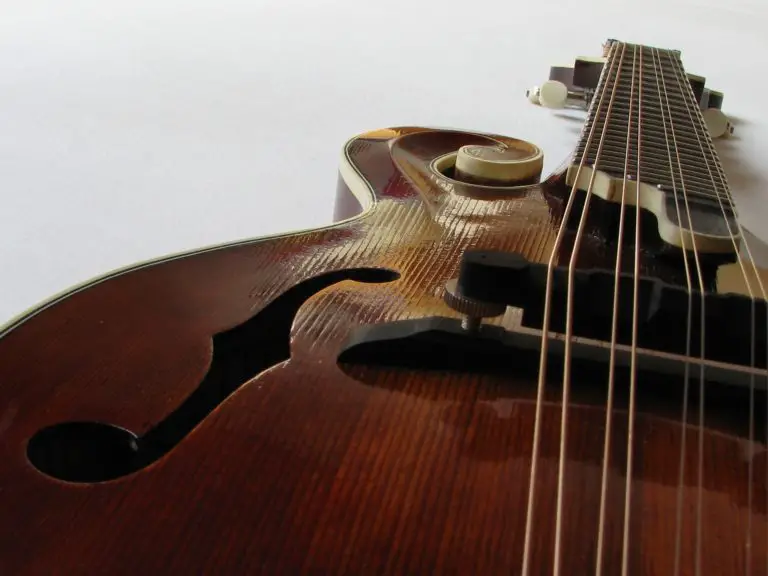
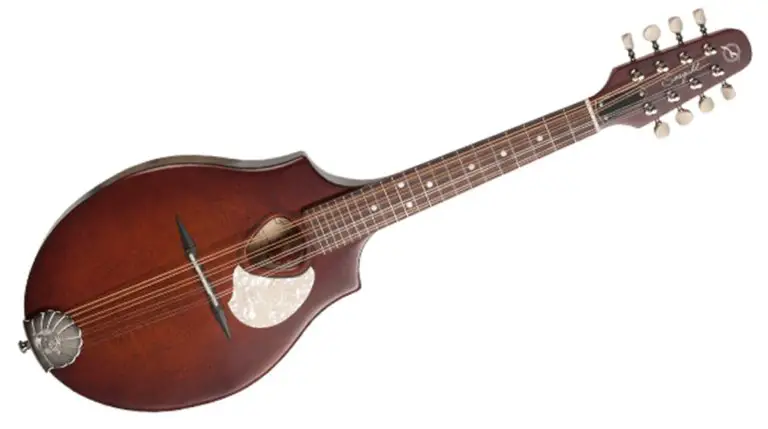

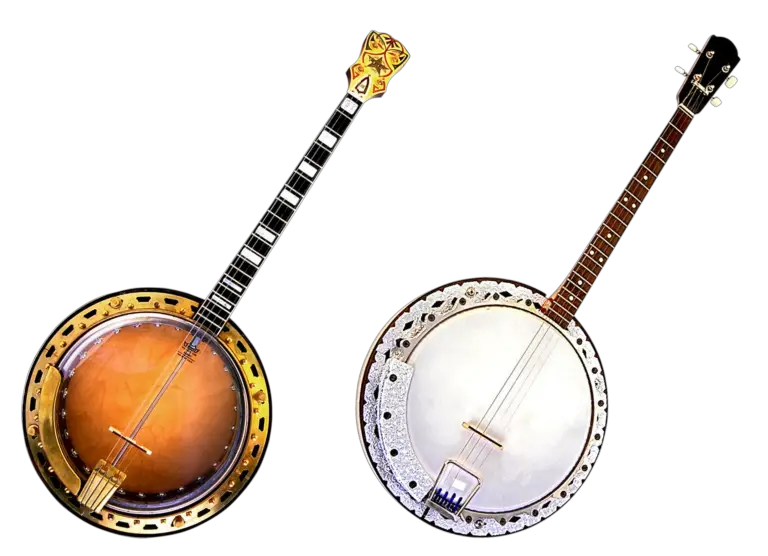
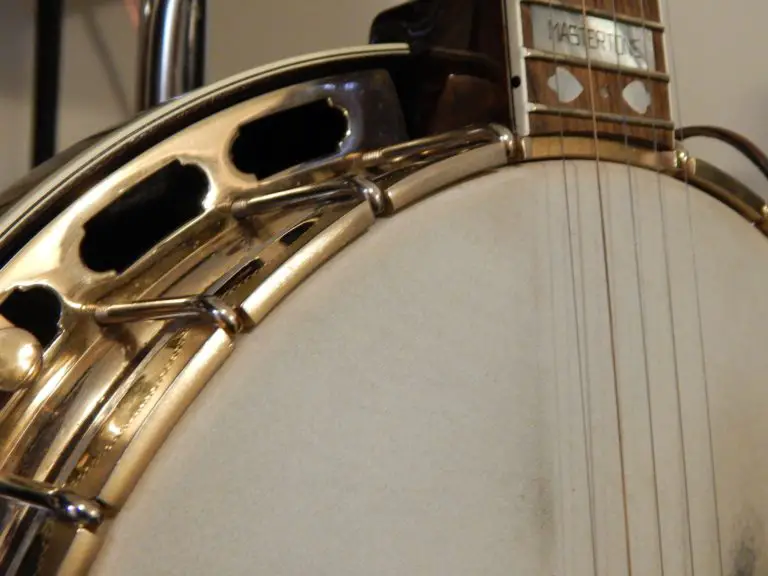
well written ! I explore epiphone mb100 banjo and its the most lilghtweight banjo I’ve ever seen. You can list down it.